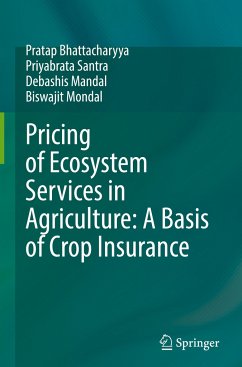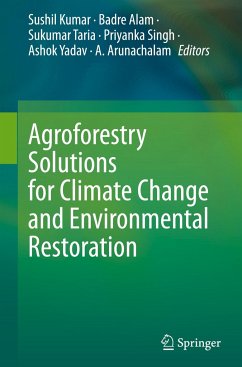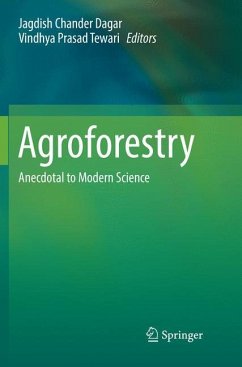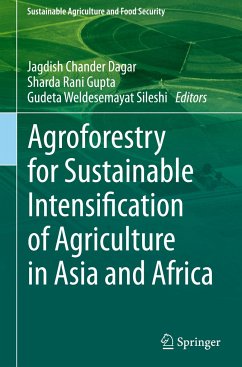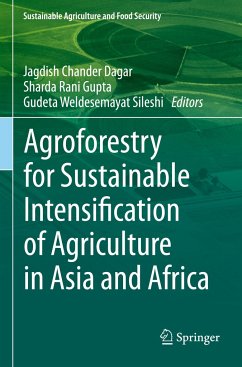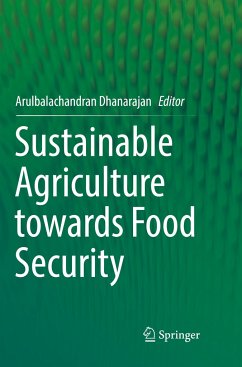
Agroforestry
Nature Based Solution for Climate Change and Food Security

PAYBACK Punkte
53 °P sammeln!
This book explores the diverse potential of agroforestry systems in transforming agricultural practices to sustainably produce food, feed, and materials for supporting community livelihoods. Agroforestry stands out for its ability to detoxify contaminants in soil, water, and plants, thereby providing high quality and affordable food and feed.The topics in this book include the cultivation of plant-based food and feed sources within the spaces between trees, known as alley crops, and the integration of fruit trees, which diversify nutritional sources. Agroforestry not only enhances food securit...
This book explores the diverse potential of agroforestry systems in transforming agricultural practices to sustainably produce food, feed, and materials for supporting community livelihoods. Agroforestry stands out for its ability to detoxify contaminants in soil, water, and plants, thereby providing high quality and affordable food and feed.
The topics in this book include the cultivation of plant-based food and feed sources within the spaces between trees, known as alley crops, and the integration of fruit trees, which diversify nutritional sources. Agroforestry not only enhances food security but also bolsters livelihood security by adding value to agroforestry products, from farming plots to the final food products, and through associated animal husbandry and fishery practices. The rapid growth of trees in agroforestry systems offers lucrative opportunities, such as timber production, which alleviates pressure on natural forests and aids in forest conservation andclimate change mitigation through carbon sequestration.
The book highlights how agroforestry aligns with the United Nations' 17 Sustainable Development Goals (SDGs).
The book will be a valuable resource for students, researchers, and professionals in the fields
The topics in this book include the cultivation of plant-based food and feed sources within the spaces between trees, known as alley crops, and the integration of fruit trees, which diversify nutritional sources. Agroforestry not only enhances food security but also bolsters livelihood security by adding value to agroforestry products, from farming plots to the final food products, and through associated animal husbandry and fishery practices. The rapid growth of trees in agroforestry systems offers lucrative opportunities, such as timber production, which alleviates pressure on natural forests and aids in forest conservation andclimate change mitigation through carbon sequestration.
The book highlights how agroforestry aligns with the United Nations' 17 Sustainable Development Goals (SDGs).
The book will be a valuable resource for students, researchers, and professionals in the fields



